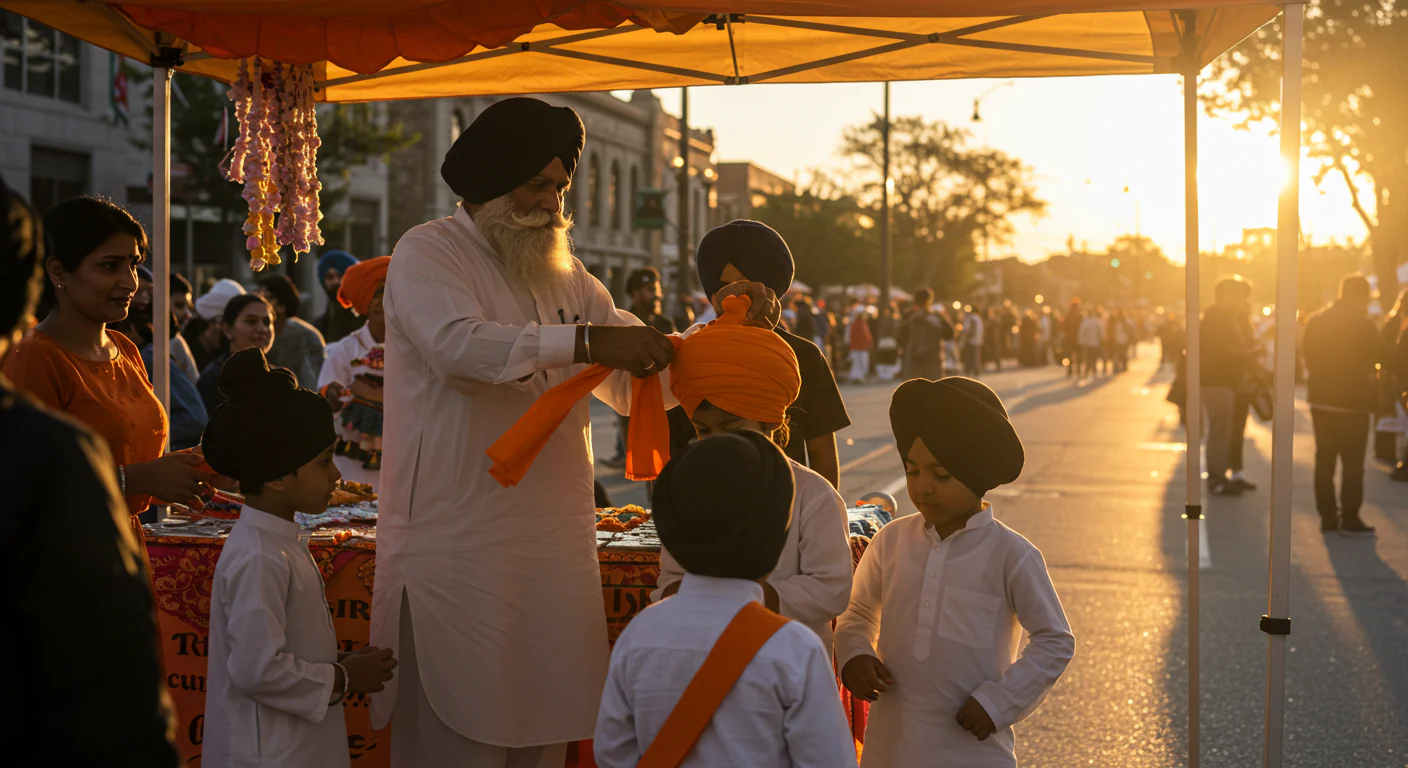

Symbol of Identity: Delving into the Meaning of ‘The Gift of Dastar’

The dastaar – the turban – is much more than a piece of cloth for many Sikhs. For those who have been baptized into the Khalsa (Amritdhari Sikhs), it is a required and visible part of their identity. It covers uncut hair as a sign of respect for the body as a gift, and it also carries deeper meanings: honour, courage, spiritual focus and a commitment to live with dignity.
A badge of identity and dignity
When you see a turban, you’re often seeing someone who has publicly taken on Sikh values. The turban helps Sikhs stand out – not as a fashion statement, but as a crown of responsibility. It says: “I belong to a faith that values equality and service.” While turbans are most commonly associated with Sikh men, many women wear them too. Other Sikhs choose different practices; wearing a turban is especially central to Khalsa identity.
Roots in history and tradition
The turban has been part of Sikh life for centuries. Early Sikh leaders and the Sikh Gurus referenced head coverings as part of daily discipline and dignity. Over time the turban came to be tied up with rites of passage and leadership – think of the traditional act where a son takes on his father’s turban to show he accepts family responsibility. Historical accounts also describe how Sikh leaders would tie turbans and prepare warriors for battle, underlining the garment’s association with courage and duty.
What the turban symbolizes
Across communities, the dastaar stands for several overlapping ideas: spiritual focus, moral honour, readiness to defend the vulnerable, and pride in one’s faith. The saffron or orange turban, in particular, is often linked to sacrifice and bravery. The practice of “pag vatauni” – swapping turbans between close friends – signals a lifelong bond and mutual support.
Practical and spiritual beliefs
Some Sikhs speak of the turban in spiritual or even physiological terms: covering the head is believed by some to support focus, protect the mind, and help steady the body’s energies. These are personal and cultural beliefs rather than scientific claims; they reflect how deeply wrapped the turban is in the lived experience and worldview of many devotees.
Sayings and cultural meaning
Punjabi proverbs and old stories show how important a turban has been in daily life – so much so that someone without a turban could be mistaken as unwell or dishonoured. Writers and historians from Sikh tradition often used the turban as a shorthand for respectability and social standing.
Courage, service and sacrifice
The turban’s link to courage is rooted in Sikh history. Tales of Sikh warriors, and of Gurus who blessed and prepared their followers for sacrifice, have made the turban a symbol of bravery. At the same time it also signals service – tying on the dastaar is as much about caring for others as it is about personal honour.
Harassment and the modern experience
Because the turban is so visible, Sikh wearers have sometimes faced misunderstanding and harassment. After events such as 9/11 in the United States, some Sikhs were wrongly targeted because of their appearance. Community groups, police forces and advocacy organizations have since worked to educate the public about Sikh identity and to reduce hate and confusion.